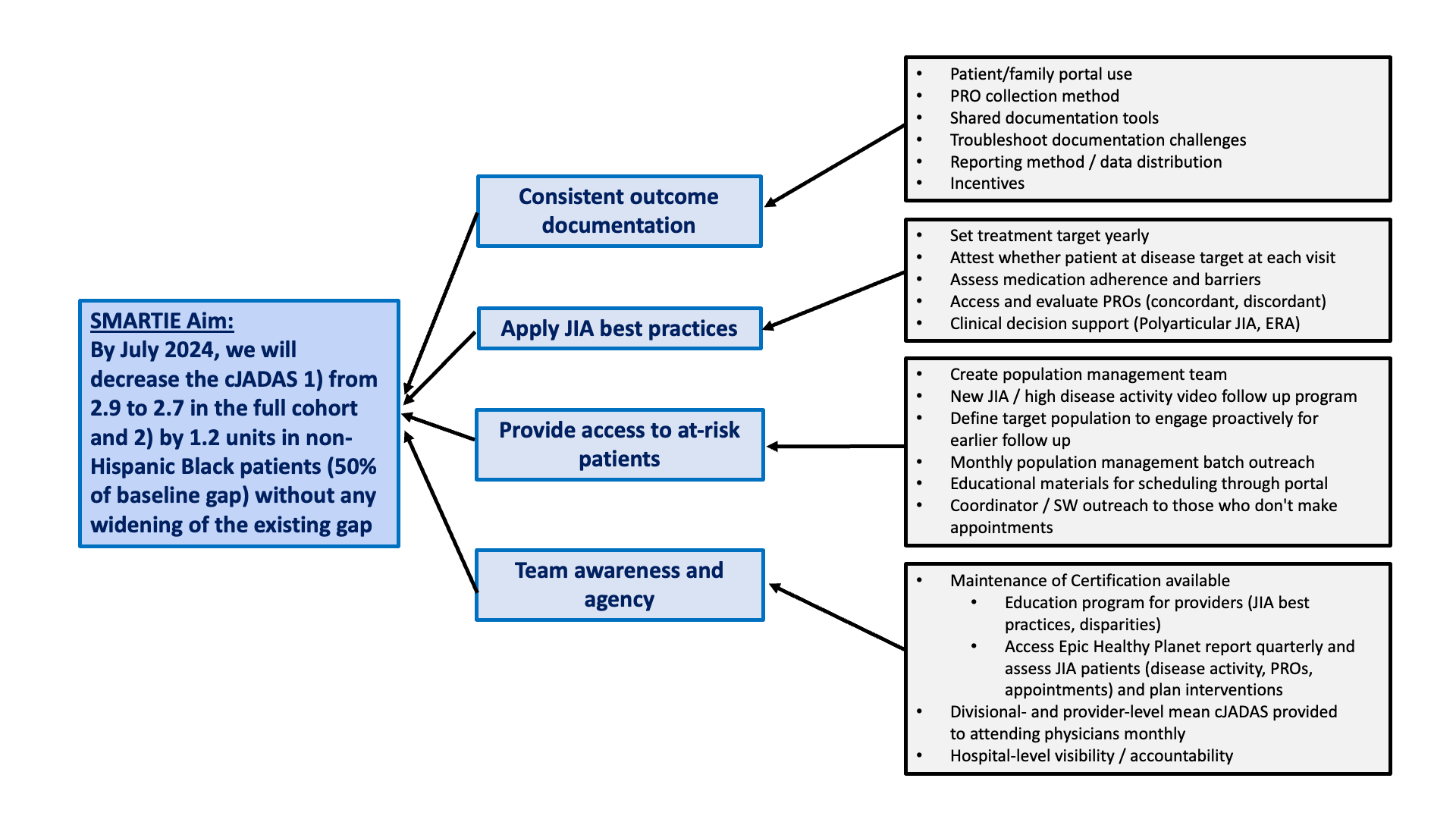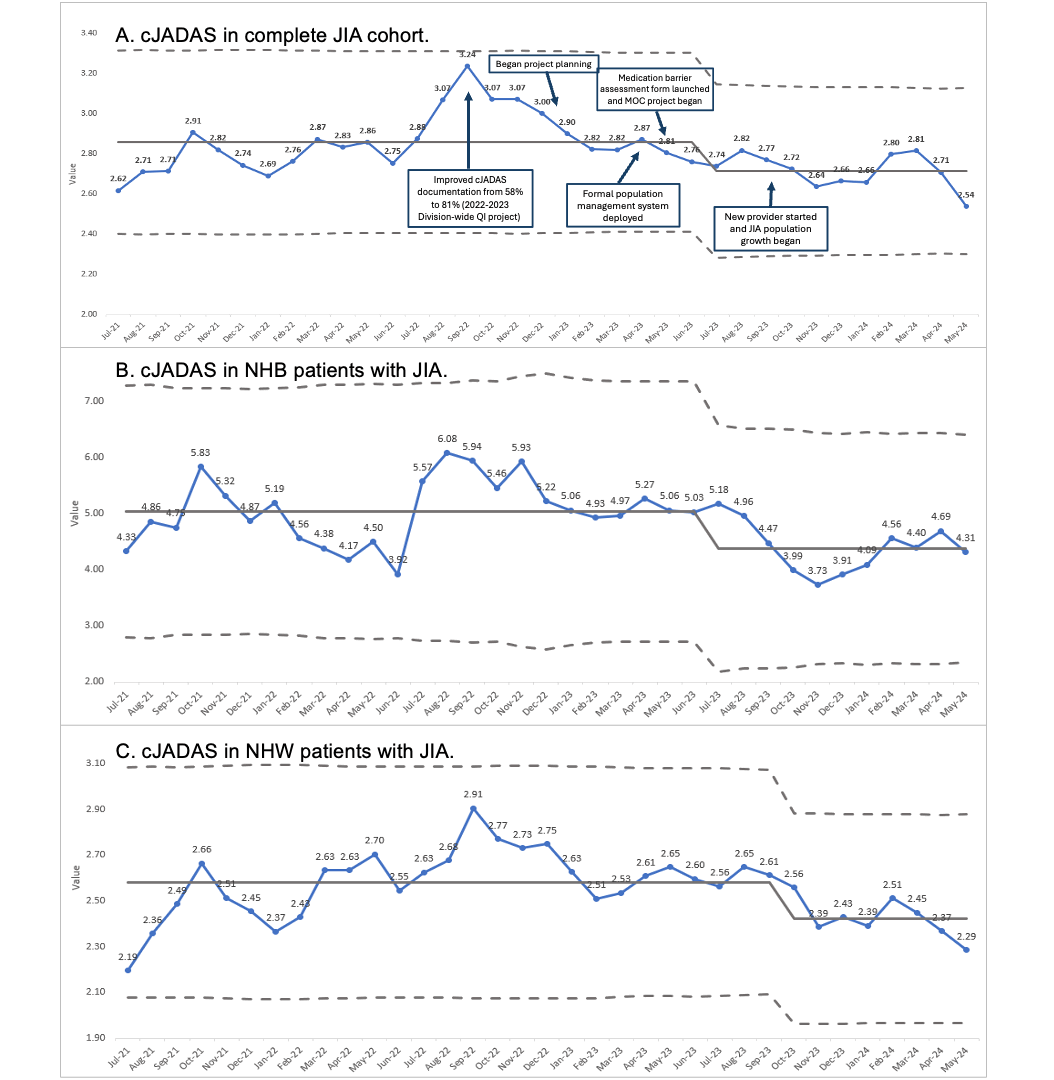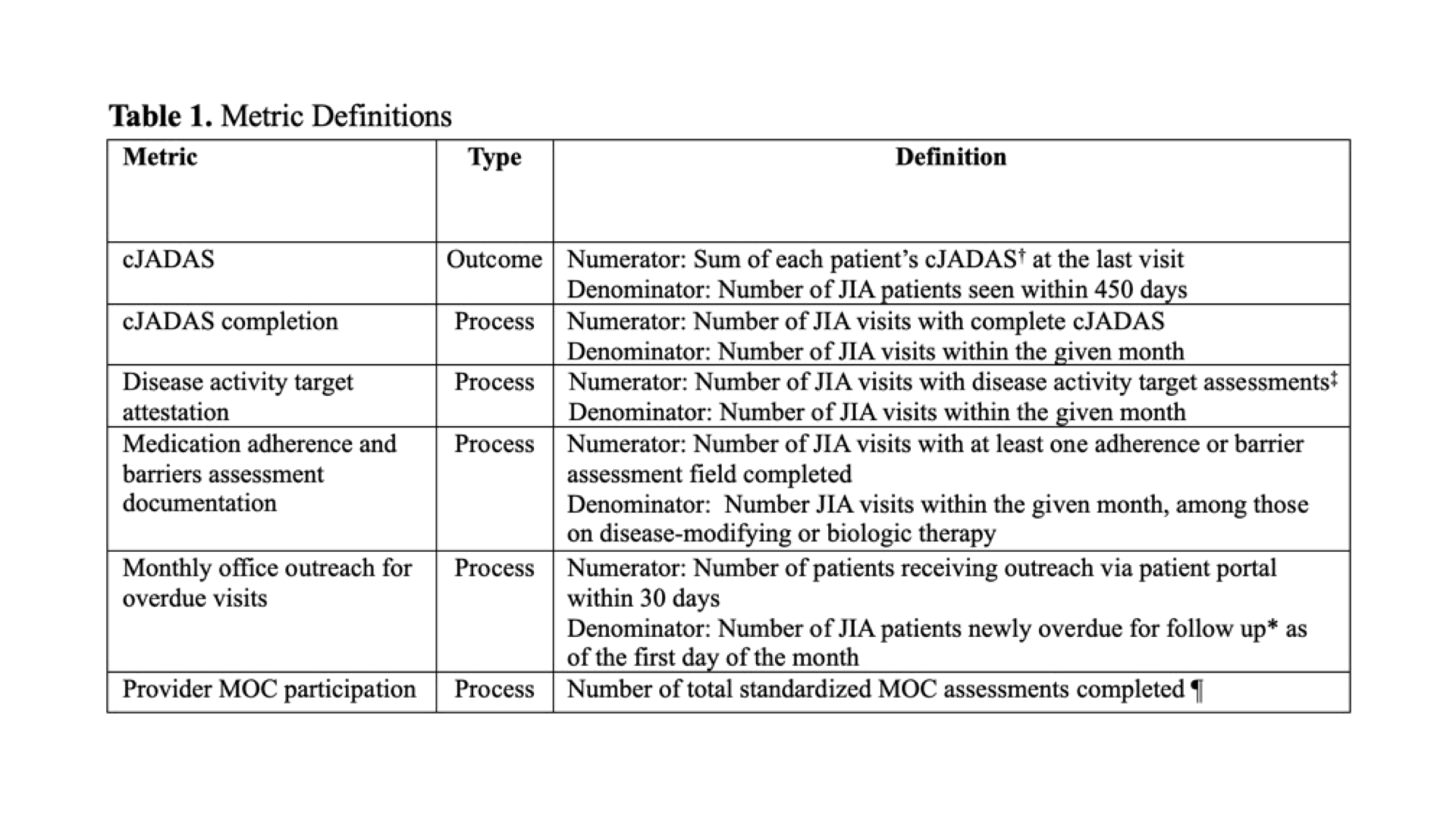Session Information
Date: Monday, November 18, 2024
Title: Plenary III
Session Type: Plenary Session
Session Time: 9:00AM-10:30AM
Background/Purpose: Although new therapeutics and treat-to-target interventions have improved JIA care, pronounced racial and ethnic outcome disparities persist. At our center, the mean population-level clinical Juvenile Arthritis Disease Activity Score (cJADAS) was 2.9, with greater values in non-Hispanic Black (NHB) patients (mean=5.0) compared to non-Hispanic White (NHW) patients (mean=2.6). By July 2024, we aimed to decrease the mean cJADAS 1) from 2.9 to 2.7 in the full cohort and 2) by 1.2 units in NHB patients with JIA (50% of baseline disparity gap), without any widening of the existing gap.
Methods: In early 2023, we began project planning and identified four key drivers (Figure 1): 1) consistent outcome documentation, 2) application of JIA best practices, 3) providing access to at-risk patients, and 4) team awareness and agency. In mid-2023, we formally began our interventions, focusing on population management (monthly outreach to patients overdue for follow up), standardized medication adherence assessments, and clinician engagement (monthly divisional cJADAS distribution and quarterly data assessment workshops for maintenance of certification (MOC) credit). The cohort consisted of all patients with a physician diagnosis of JIA seen within the prior 450 days. Metric definitions are presented in Table 1. Process measures included cJADAS completion (goal >80%), disease activity target attestation (goal >90%), medication adherence assessment documentation (goal >50%), monthly outreach for overdue visits (goal >75%), and MOC participation. Our primary outcome was the population-level mean cJADAS. Standard run chart and statistical process control methods were applied.
Results: In May 2024, the JIA population at our tertiary care center consisted of 870 patients (68% NHW and 7% NHB), with a growth of 9.7% in the current fiscal year. The cJADAS documentation rate remained >80%. The mean disease activity target attestation increased significantly to 95%. After launching a medication adherence assessment, performance has been stable at 75% of eligible visits. Office outreach occurred in 47% of eligible patients, and appointments for 194 visits were scheduled. Seventeen providers participated in MOC activities and performed 154 assessments total. After introducing all interventions by June 2023, we achieved a cohort centerline shift in the mean cJADAS from 2.9 to 2.7. Stratified analyses revealed improvements in both NHB (5.0 to 4.4) and NHW populations (2.6 to 2.4) (Figure 2). The disparity gap between NHB and NHW patients closed by 17% (0.4 units).
Conclusion: Improving JIA outcomes and reducing disparities was feasible at a large tertiary care center. Eleven months after our interventions began, the mean population-level cJADAS decreased significantly (7% reduction). Although we did not achieve our initial disparity reduction goal, NHB patients experienced notable improvements (12% reduction in cJADAS). Refining and sustaining high performance of clinic processes and developing new interventions, including social determinants of health screening, will be needed to further improve outcomes.
To cite this abstract in AMA style:
Abel D, Spichiger K, Roman M, Baar W, O'Malley C, Mehta J, Al'Hadi T, Ferraro K, Butler D, Wilson-Sanders A, Lewis C, Dodson D, Burnham J. Improving Outcomes and Narrowing Disparities in Juvenile Idiopathic Arthritis (JIA): A Division-Wide, Equity-Focused Quality Improvement Project [abstract]. Arthritis Rheumatol. 2024; 76 (suppl 9). https://acrabstracts.org/abstract/improving-outcomes-and-narrowing-disparities-in-juvenile-idiopathic-arthritis-jia-a-division-wide-equity-focused-quality-improvement-project/. Accessed .« Back to ACR Convergence 2024
ACR Meeting Abstracts - https://acrabstracts.org/abstract/improving-outcomes-and-narrowing-disparities-in-juvenile-idiopathic-arthritis-jia-a-division-wide-equity-focused-quality-improvement-project/



